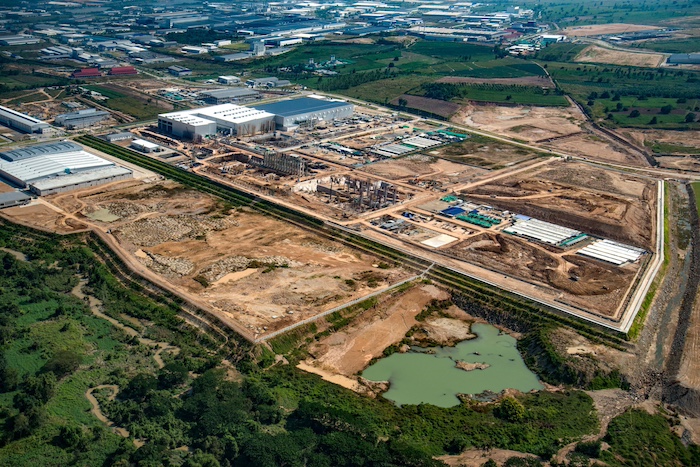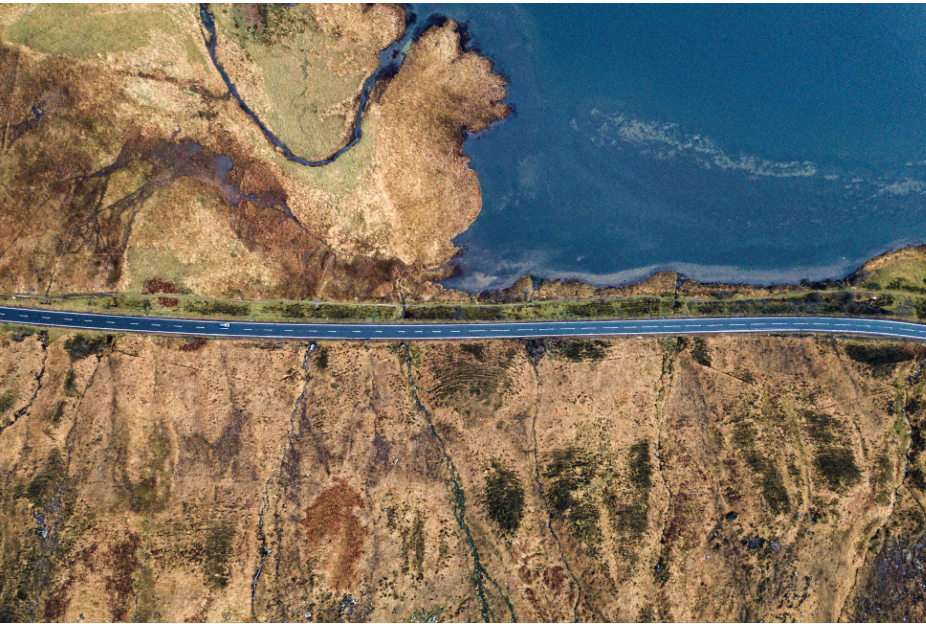Don’t Jeopardize Your Title: Identifying owners of mineral rights beneath your solar project
What’s underneath the surface of the land that you plan to develop and who owns it? Identifying owners of mineral rights is critical for utility-scale solar energy projects, especially in regions where these rights are legally separable from surface rights. This refers to the severance of underground mineral rights from the surface rights of the property. Mineral rights can include natural gas, oil, coal, or any other types of minerals found beneath the surface of the land. Owners of these rights have the legal authority to mine, exploit, or produce the minerals beneath the surface. Importantly, these rights can be sold or leased separately from the land itself, leading to situations where surface rights and mineral rights have different owners.

In a “worst case” scenario, a recent ruling by a federal judge ordered the removal of an 84-turbine, 150-megawatt wind farm for encroaching on the Osage Nation’s tribal mineral rights. The court ruling came after the Interior Department sued the company for failing to get a mining approval for the project, which may cost the company more than half a billion dollars.
Preliminary research
It’s always a good idea to develop a cordial relationship with landowners. They are likely to have the best knowledge of the ground and what is under it. While their understanding of the legal history may not be perfect, they generally have valuable background information.
Land and mineral rights transactions are recorded at the county assessor and clerk’s offices. Many counties now offer online databases, but in-person visits may be necessary. State geological surveys and the U.S. Geological Survey (USGS) can also help identify regions with potential mineral deposits and areas where mineral rights might be actively leased or sold.
Due diligence and title search
Mineral coverage is an ALTA endorsement offered by the title insurance company. It is typically required by lenders or investors as an addition to their policy, so it’s critical to get the title insurance company involved as early as possible to strategize what they may need to issue this endorsement. Typical considerations may include whether there are any active wells or mines in the area, whether there are any active leases given by the mineral owners, and whether the developer intends to leave part of the project area open to protect the mineral owner’s right to exploration. It is important to note that, in many states, mineral owners are the dominant estate holder and have the right to enter the surface of the land and use it to access the minerals.
Trace the history of mineral rights ownership, looking for deeds, leases, wills, and court records that mention mineral rights, noting any divisions or retainments. When faced with complex mineral rights ownership issues, it may be beneficial to hire a professional landman or a title attorney. They possess the skills and knowledge to navigate the intricate landscape of ownership records, interpret legal documents, and identify the rightful owners. The goal is to establish a chain of title — a sequence of historical documents reflecting the transfer of mineral rights through time.

Laws governing mineral rights can vary significantly by state, with some states granting more privileges to mineral rights owners than others. Familiarize yourself with pertinent federal and state legislation that may influence your project.
Negotiating with mineral rights owners
Many landowners have a clear understanding of the mineral rights associated with their property. By engaging in a dialogue with the landowners, you can gain insights into the ownership structure and their expectations. It is important to develop trust so that you can explore lease agreements that align with their interests as well as the goals of the project.
Compensation for mineral rights owners can come in many forms, including upfront payments, royalties, or a combination thereof. Be prepared to discuss how your renewable energy project aligns with environmental sustainability goals, potentially mitigating concerns from mineral rights owners about the impact of development on the land. Legal counsel specializing in mineral rights can help craft agreements that protect the interests of all involved.
Recording as protection
 To eliminate as many title issues as possible, the developer should record memoranda of site control as early as possible. In most states, the person with the most superior rights is the person who has recorded first. The act of recording a document protects the rights of everyone who is a party to that agreement. Recording a document puts the world on notice, in the public record, of the rights contained therein. Signing a contract with a landowner protects the developers interests with that landowner. Most importantly, recording a contract or a memorandum protects the developers interests against any other developer or landowner who may come along and want to purchase or lease the property. The person who records their interest first is described as having priority over people who record later in time.
To eliminate as many title issues as possible, the developer should record memoranda of site control as early as possible. In most states, the person with the most superior rights is the person who has recorded first. The act of recording a document protects the rights of everyone who is a party to that agreement. Recording a document puts the world on notice, in the public record, of the rights contained therein. Signing a contract with a landowner protects the developers interests with that landowner. Most importantly, recording a contract or a memorandum protects the developers interests against any other developer or landowner who may come along and want to purchase or lease the property. The person who records their interest first is described as having priority over people who record later in time.
Combined commitment and pro forma
After reviewing a commitment, and trying to cure as many exceptions and fulfill as many requirements as possible, the developer will need to request a combined commitment and proforma to head into closing. A combined commitment takes each individually produced commitment for each parcel or landowner and groups them into one large commitment reflecting the entirety of the land in the project. They can be very long and cumbersome. The pro forma is a version of exactly what the policy will look like, assuming all conditions have been met.
Pro forma policies also bring with them the possibility of pro forma endorsements. An endorsement is an add-on to the title insurance coverage granted by the policy. The list of possible endorsements typically begins with a list curated by the American Land Title Association (ALTA), and covers additional coverage for the usual transactions encountered by title insurance carriers. There are several ALTA endorsements which specifically pertain to renewable energy projects and closings.
Final thoughts
Identifying and negotiating with owners of mineral rights is a complex process that requires due diligence, legal knowledge, and strategic negotiation skills. When armed with a willingness to find mutually beneficial solutions, project developers can build cooperative relationships with mineral rights owners, paving the way for successful utility-scale project development.
 Jillian Ballard is Director of Projects, Sr. Counsel at TerraPro Solutions. Jillian is an experienced title and real estate attorney, specializing in renewable energy development. She has built and directed land and title teams on the developer side, and has a keen understanding of the needs of all parties involved including title insurance companies, surveyors, lenders, and investors. She is a skilled negotiator and a creative problem solver. Jillian graduated with a JD from the University of Louisville and a Bachelor of Arts from Vanderbilt University in German Language and Literature. You can reach her at jballard@terraprosolutions.
Jillian Ballard is Director of Projects, Sr. Counsel at TerraPro Solutions. Jillian is an experienced title and real estate attorney, specializing in renewable energy development. She has built and directed land and title teams on the developer side, and has a keen understanding of the needs of all parties involved including title insurance companies, surveyors, lenders, and investors. She is a skilled negotiator and a creative problem solver. Jillian graduated with a JD from the University of Louisville and a Bachelor of Arts from Vanderbilt University in German Language and Literature. You can reach her at jballard@terraprosolutions.
TerraPro Solutions | www.terraprosolutions.com
Author: Jillian Ballard
Volume: 2024 May/June









.png?r=3557)


